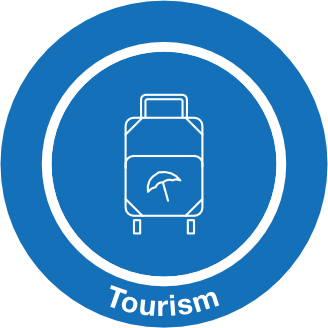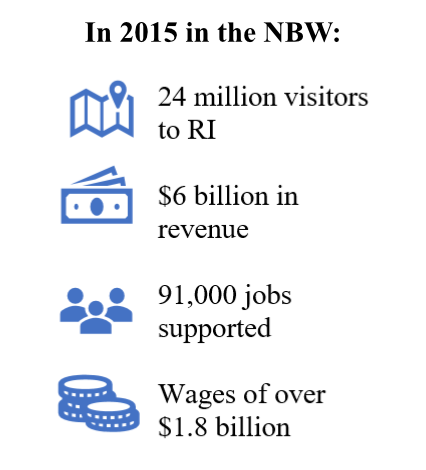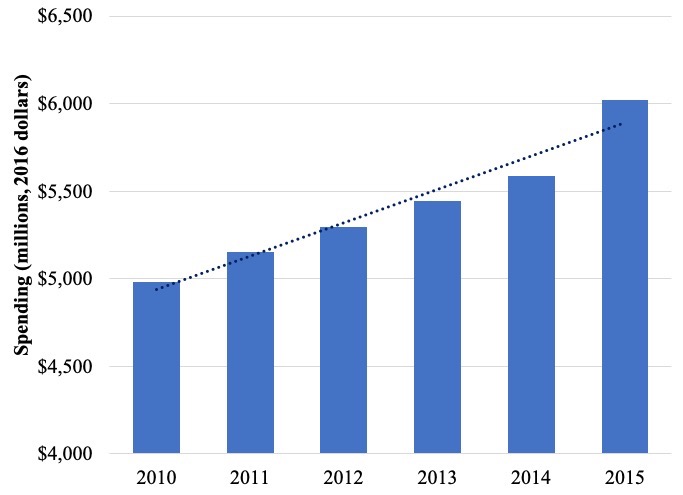

Recent Trends
The size of the tourism industry is difficult to measure precisely, since tourism transects numerous other industries. This report measured in three ways: data from two industries closely related to tourism from the Bureau of Labor Statistics, seasonal tax revenue from the Rhode Island (RI) Department of Revenue, and two 2015 reports from Tourism Economics and the Research Department of the U.S Travel Association.
- Tourism creates jobs: industries closely related to tourism (arts/entertainment/recreation sector and accommodation/food services sector) were selected to serve as proxies for the tourism sector. In 2015, in counties within the NBW, the Bureau of Labor Statistics estimates that there were over 5,500 businesses employing over 91,000 people with wages over $1.8 billion (2016 dollars). While not all of these establishments deal with tourism, these figures highlight the broad scope of businesses that interact with the tourism sector.
- Tourism generates seasonal tax revenue: assuming that tourism peaks in the summer, its seasonal effect was calculated on two taxes closely related to tourism in RI – the hotel tax and the meal and beverage tax. In 2015, $5.4 million (2016 dollars) in revenue was due to this seasonal effect, and it can be related to tourism.
- Tourist spending stimulates the economy: the journal Tourism Economics estimated that in 2015, the expenditure of tourists in RI was an estimated $6 billion (2016 dollars) (see graph), supporting nearly 80,500 jobs directly related to tourism in RI (60,000 specifically in the watershed) and accounting for 13% of employment in the state (Figure 1).
- Tourism also makes its mark in the MA portion of the NBW: In domestic tourism, the four MA counties in the NBW accounted for $2.9 billion, or 17% of total domestic tourism spending.
- Arts and culture contribute to tourism and the local economy: according to BEA data, there were 15,900 employees in RI and 19,400 in MA the Arts and Culture sector in the NBW in 2015, with almost $1 billion and $1.7 billion in wages respectively.

Future Outlook
The future of tourism is at risk from the effects of climate change, including submersion of infrastructure by storm surges and sea level rise. Additionally, many sectors related to tourism rely on a healthy environment, such as beach use and recreational fishing, yet they are under stress from the effects of climate change. These include threats to water quality arising from increasing water temperatures, which may lead to increased algal and bacterial outbreaks. Human development may exacerbate these effects – for example, increasing impervious cover from expanding human settlements leads to more pollutants running off into the water.

